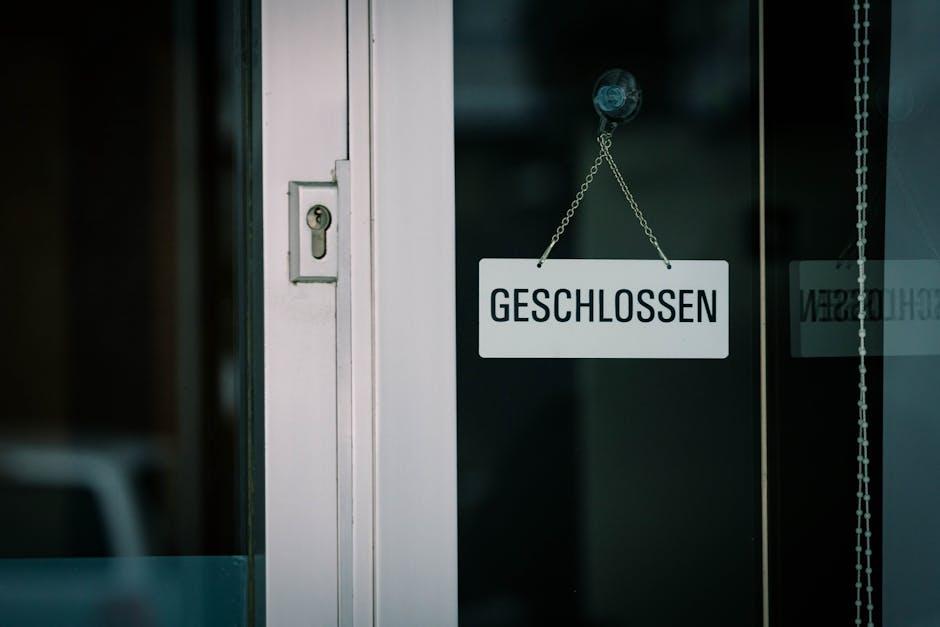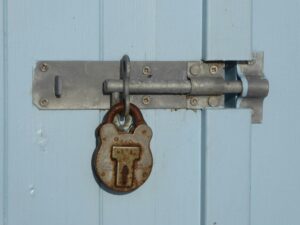In the bustling world of business, security is more than just a precaution-it’s a cornerstone of success. Whether safeguarding sensitive information or protecting valuable assets, the right locksmith strategies can make all the difference. In this article, we unravel the expertise of seasoned commercial locksmiths, revealing top tips that unlock not only doors but also peace of mind. Dive in to discover practical advice and innovative solutions designed to elevate your business security to the next level.
Table of Contents
- Effective Key Management Strategies for Enhancing Security
- Choosing the Right Lock Systems for Your Business Needs
- Preventative Maintenance Practices to Avoid Lockouts
- Emergency Response Tips for Commercial Lock Situations
- Insights and Conclusions

Effective Key Management Strategies for Enhancing Security
Mastering the art of key management is pivotal in maintaining robust security frameworks for any commercial establishment. A practical approach involves implementing a systematic key control policy that clearly delineates ownership, access rights, and accountability. This can be powered by a well-maintained key registry that keeps track of who has what key, when it was issued, and when it was returned. Incorporating key-cutting logs, regular audits, and scheduled key inspections help preempt unauthorized duplication and loss, which are common vulnerabilities often overlooked.
Technology also plays a significant role in transforming traditional key management into a streamlined, error-resistant process. Investing in electronic key cabinets with biometric or code-based access strengthens control, ensuring only authorized personnel can retrieve keys. Here’s a quick guide for gearing your key management strategy toward higher efficiency:
- Centralized Key Storage: Use secure cabinets in monitored locations to centralize control.
- Access Logs: Maintain real-time digital logs of key usage.
- Regular Audits: Conduct periodic checks to reconcile keys and update access rights.
- Training and Awareness: Educate staff on the importance of key security and protocols.
| Strategy | Benefit | Frequency |
|---|---|---|
| Key Inventory Audits | Identify missing keys early | Monthly |
| Digital Key Management | Track access instantly | Continuous |
| Staff Training Sessions | Enhance security awareness | Quarterly |
| Access Rights Review | Limit unnecessary access | Biannual |

Choosing the Right Lock Systems for Your Business Needs
When selecting lock systems for a commercial space, it’s crucial to analyze the unique security demands of your business. Factors such as the size of your premises, the number of employees, and the type of valuables you protect will heavily influence the ideal choice. Consider smart locks for high-traffic areas, as they offer flexible access control and remote monitoring, enhancing both security and convenience. On the other hand, traditional mechanical locks may be suitable for less critical zones or backup entry points to ensure layered protection.
Additionally, integrating the right lock systems can streamline your security protocols, creating a cohesive defense against unauthorized access. Below is a simple breakdown of key lock types to help you make an informed decision:
| Lock Type | Best For | Key Features |
|---|---|---|
| Electronic Keypad | Employee-Only Access | Code Entry, Easy to Reprogram |
| Biometric Locks | High-Security Areas | Fingerprint or Facial Recognition |
| Magnetic Card Systems | Large Offices | Swipe Cards with Controlled Access |
| Mechanical Locks | Backup/Secondary Doors | Durable, Cost-Effective |
- Evaluate your access needs consistently to update your system as your business grows.
- Consult with a professional locksmith to assess vulnerabilities and recommend tailored solutions.
- Prioritize scalability and integration with existing security infrastructure for maximum efficiency.
Preventative Maintenance Practices to Avoid Lockouts
Regular upkeep of your locking systems is the cornerstone of ensuring seamless access and averting inconvenient lockouts. Incorporate a routine schedule that includes lubrication of moving parts with graphite or silicone-based lubricants, which prevents jamming and rust buildup. Equally important is the inspection of wear and tear on keys and locks – identifying issues like bent keys or loose screws early can save you from emergency lockout situations. Don’t forget to clean keyholes and lock mechanisms to maintain smooth operation, especially in environments exposed to dust or moisture.
Establishing preventive protocols can make all the difference in your security reliability. Consider the following checklist:
- Monthly visual inspections of all lock systems
- Key duplication and testing every six months
- Scheduled rekeying or lock replacements after personnel changes
- Use of high-quality, durable hardware tailored to your facility
- Emergency contact setup with a trusted commercial locksmith
| Maintenance Task | Frequency | Key Benefit |
|---|---|---|
| Lubrication | Quarterly | Prevents sticking & rust |
| Visual Inspection | Monthly | Early problem detection |
| Rekeying | Annually or as needed | Enhances security after changes |
Emergency Response Tips for Commercial Lock Situations
When faced with a commercial lock emergency, quick and calm action is paramount. Start by assessing the situation carefully-determine whether it’s a lockout, a broken key, or potential tampering. Avoid attempting to force entry, as this could cause costly damage. Instead, keep essential backup keys or access cards in a secure but accessible spot known only to trusted personnel. Additionally, having a verified and reliable locksmith’s contact saved can save crucial time and stress.
Implementing a structured response plan ensures minimal disruption to your business operations. Consider these essential steps:
- Secure the premises: Ensure that all other entry points are locked to prevent unauthorized access.
- Communicate swiftly: Notify management and affected employees about the situation and estimated resolution time.
- Document the incident: Keep a record of the problem and the locksmith’s service for future reference.
| Situation | Recommended Immediate Action | Estimated Time to Resolution |
|---|---|---|
| Lost Master Key | Initiate rekeying of affected locks immediately | 1-3 hours |
| Broken Cylinder | Call emergency locksmith to replace lock | 30 minutes – 2 hours |
| Unauthorized Access Attempt | Secure premises & change all access codes | 2-4 hours |
Insights and Conclusions
In the intricate world of commercial security, mastering the art of locksmithing is more than just a convenience-it’s a cornerstone of success. By embracing these expert tips, you’re not only safeguarding your business but also unlocking a realm of possibilities where security meets efficiency. Remember, the key to thriving in any commercial venture often lies in the subtle, unseen measures you take behind the scenes. So, equip yourself with knowledge, stay vigilant, and watch as each turn of the key opens new doors to opportunity.





